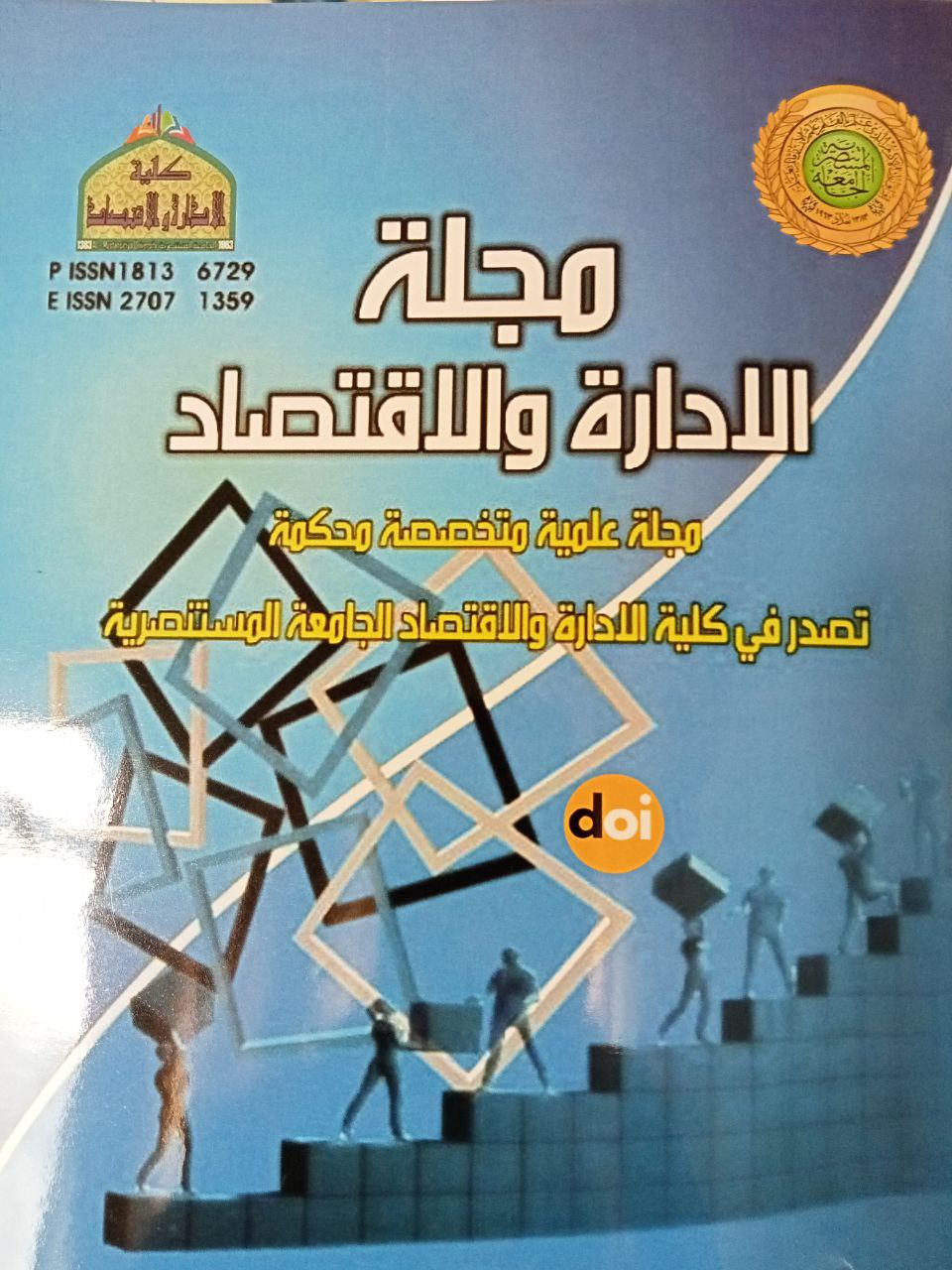The Role of IT Flexibility in Enhancing Dynamic Capabilities: An Exploratory Study
DOI:
https://doi.org/10.31272/jae.i147.1374Keywords:
information technology, dynamic capabilities, Descriptive statistics, inferenceAbstract
Business organisations increasingly use information technology to gain a competitive edge in the ever-changing business environment. This involves developing dynamic capabilities that enable them to excel and lead in their respective fields. The current research aims to assess the interest of senior and executive management in the National Centre for Diabetes and the National Centre for Hematology and Treatment in IT flexibility, including compatibility, connectivity, and modularity, and its impact on dynamic capabilities, including sensing, coordination, learning, and reconfiguration. The research sample included senior and executive management at the two research centres. Ninety questionnaires were distributed, 85 were retrieved, and 80 were deemed valid for statistical analysis. The analysis used descriptive statistics and inferential methods such as the t-test and F-test. The regression analysis results indicated a significant overall effect of information technology flexibility on the dynamic capabilities of the research centres, with modularity being the most influential dimension of the dependent variable.
Downloads
References
[1] Crowston, K., & Kammerer, E. E. (1998). Coordination and collective mind in software requirements development. IBM Systems Journal, 37(2), 227-245. DOI: https://doi.org/10.1147/sj.372.0227
[2] Han, J. H., Wang, Y., & Naim, M. (2017). Reconceptualization of information technology flexibility for supply chain management: An empirical study. International Journal of Production Economics, 187, 196-215 DOI: https://doi.org/10.1016/j.ijpe.2017.02.018
[3] Ismail, A. R. (2009). Assessing the relationship between the Internet, radio frequency identifier (RFID), and information technology (IT) flexibility: a correlational study and findings. Capella University.
[4] Jantunen, A., Tarkiainen, A., Chari, S., & Oghazi, P. (2018). Dynamic capabilities, operational changes, and performance outcomes in the media industry. Journal of Business Research, 89, 251-257. DOI: https://doi.org/10.1016/j.jbusres.2018.01.037
[5] Jorfi, S., Nor, K. M., & Najjar, L. (2011). The relationships between IT flexibility, IT-Business strategic alignment, and IT capability. International Journal of Managing Information Technology, 3(1), 16-31. DOI: https://doi.org/10.5121/ijmit.2011.3102
[6] Kindström, D., Kowalkowski, C., & Sandberg, E. (2013). Enabling service innovation: A dynamic capabilities approach. Journal of business research, 66(8), 1063-1073. DOI: https://doi.org/10.1016/j.jbusres.2012.03.003
[7] Mikalef, P., & Pateli, A. (2017). Information technology-enabled dynamic capabilities and their indirect effect on competitive performance: Findings from PLS-SEM and fsQCA. Journal of business research, 70, 1-16. DOI: https://doi.org/10.1016/j.jbusres.2016.09.004
[8] Ness, L. R. (2005). Assessing the relationships among IT flexibility, strategic alignment, and IT effectiveness: study overview and findings. Journal of Information technology management, 16(2), 1-17.
[9] Pavlou, P. A., & El Sawy, O. A. (2011). Understanding the elusive black box of dynamic capabilities. Decision sciences, 42(1), 239-273 DOI: https://doi.org/10.1111/j.1540-5915.2010.00287.x
[10] Quinn, R & Dutton, J. (2005). “Coordination as energy-in-conversation: A process theory of organizing”. Academy of Management Review, 30(1): 38-57. DOI: https://doi.org/10.5465/amr.2005.15281422
[11] Shuen, A., Feiler, P. F., & Teece, D. J. (2014). Dynamic capabilities in the upstream oil and gas sector: Managing next generation competition. Energy Strategy Reviews, 3, 5-13. DOI: https://doi.org/10.1016/j.esr.2014.05.002
[12] Teece, D. J. (2017). Dynamic capabilities and (digital) platform lifecycles. In Entrepreneurship, innovation, and platforms (Vol. 37, pp. 211-225). Emerald Publishing Limited. DOI: https://doi.org/10.1108/S0742-332220170000037008
[13] Zahra, S & George, G. (2002). “Absorptive capacity: A review, reconceptualization, and extension”. Academy of Management Review, 27 (2): 185-203. DOI: https://doi.org/10.5465/amr.2002.6587995

Downloads
Published
Issue
Section
Categories
License
Copyright (c) 2025 حيدر عبد المحسن مجباس، نهضة علي عباس

This work is licensed under a Creative Commons Attribution 4.0 International License.
The journal of Administration & Economics is an open- access journal that all contents are free of charge. Articles of this journal are licensed under the terms of the Creative Commons Attribution International Public License CC-BY 4.0 (https://creativecommons.org/licenses/by/4.0/legalcode) that licensees are unrestrictly allowedto search, download, share, distribute, print, or link to the full text of the articles, crawl them for indexing and reproduce any medium of the articles provided that they give the author(s) proper credits (citation). The journal allows the author(s) to retain the copyright of their published article.
Creative Commons-Attribution (BY)









